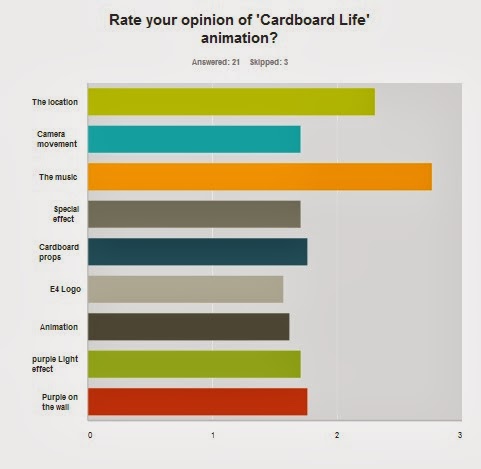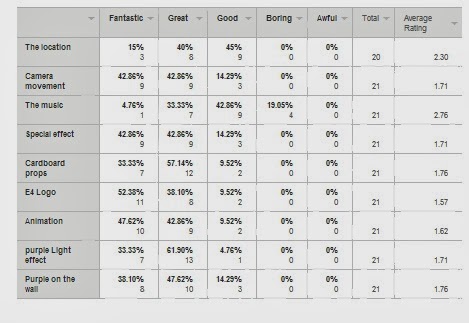Unit 35
Research
Artists first experimented with video art in the 1960s when
video art first appeared. Video art relies on video and/ or
sound to make new medium. In the 1990s, digital technology joined together with the video process, independent film-making and photography.
Nam June Paik is thought to be the founder of video art. He had his first exhibition with manipulated TV in 1963 at the Gallery Parnass in Wuppertal.
Over time, Nam June Paik worked with the Neo-Dada art
movement, known as Fluxus, the artists were inspired by the composer John Cage
who used everyday sounds and noises in his music. He showed his work at an
exhibition known as Exposition of Music-Electronic Television where he
scattered televisions everywhere and used magnets to alter or distort their
images.
Paik was known for making robots out of television sets. These were made using pieces of wire and metal, but later Paik used parts from radio and television sets.

Nam June Paik, 'Robot K-456' and Charlotte Moorman (1964).
Paik was known for making robots out of television sets. These were made using pieces of wire and metal, but later Paik used parts from radio and television sets.
Nam June Paik, 'Robot K-456' and Charlotte Moorman (1964).
http://www.paikstudios.com/#top
Electronic Superhighway: Continental U.S., Alaska, Hawaii
fifty-one channel video installation (including one closed-circuit television feed), custom electronics, neon lighting, steel and wood; color, soundapprox. 15 x 40 x 4 ft.Paik siad that, 'The different colors remind us that individual states still have distinct identities and cultures, even in today's information age." He meant that each American state had its own history, values and diversity so he shows this with the individual shapes and colours.
Megatron/Matrix: here he created aneight-channel video installation with custom electronics; color, soundapprox. 132 x 396 x 48 in. (335.3 x 1005.8 x 121.9 cm)Paik said, '... our bodies are our primal connection to the world, but the effect on the viewer is of being assaulted by "too much information.' The 215 TV screens show different mixes images from the Seoul Olympics with Korean folk rituals and modern dance. Smaller clips play at the same time on multiple monitors, while larger, animated images flow across the boundaries between screens, suggesting a world without borders in the electronic age.
A modern video artist I am interested in is Michael Betancourt. He is a critical theorist, film theorist, art and film historian, and animator. He looks at the technologies of visual music, new media art and theory, and motion pictures.
He has used old film footage with modern footage to create his video artwork.
http://av.vimeo.com/34521/441/136531114.mp4?token2=1390386989_e6abe2f72d9285a9905ae914e1cd3ea1&aksessionid=05c94bb07336b29f&ns=4

she, my memory (2002)
Michael Betancourt made this in 2002, he used his editing software to render high quality footage into very low quality footage. He used small footage because low quality footage are 240p resolution. If he made them extend to fit in 4:6 screen then there will huge pixel with a blur.
David Finkelstein, 'Film Threat' said '... an image of the woman he is seeking is caught and frozen within the rushing motion, and gradually blown up until the pixelization of the image makes it unrecognizable. This film uses a spare and powerful visual language to depict the unease that our memories can cause us..." about she, my memory.'
The Kodak Moment (2013)
https://vimeo.com/73802758: Michael Betancourt
The silent film actress Mae Murray, known as the “girl with bee-stung lips,” is shown in fancy dress, flirting with the audience. She is an early 20th Century Hollywood film star with her white face and red lips, a form that was already old when the source film was shot in 1922. Here Betancourt has glitched and fragmented her movement. but she is still recognizable throughout this movie. The music is from an old 1920 recording of piano soloist Mary Hallock-Greenewalt playing Chopin’s Nocturne in G Major.
Glitch is used to describe these kinds of bugs as they happen in software, video games, images, videos, audio, and other forms of data. Contact Light (2012)
Michael Betancourt
Contact Light explores the idea of the 'man in the moon' through glitches, optical illusions and the Apollo 11 and 17 missions in 1969 and 1972, designed by Michael Betancourt.
In Georges Melies' 1902 film "A Trip to the Moon," the astronomers are dressed as wizards, not scientists, putting the journey they make into fantasy-- seventy years later humans actually go to the moon.. It is possible to have seen Melies' film when it was new and to watched the 1969 moon landing as an adult. He has linked them together to make a juxtaposition of old fantasy ideas of the moon and visiting it in reality that gave rise to this film.
http://www.othercinema.com/otherzine/the-process-of-eupraxis-in-making-dancing-glitch-2013/
Dancing Glitch is a 2.5 minute long movie that is based around footage from the Louis Lumière film Danse serpentine, vue no. 67, then dancer/choreographer is Loïe Fuller, filmed in 1896. Betancourt liked early 20th Century artwork. The clip was hand coloured and the colour was animated. He compressed the digital file but kept some of the detail. Betancourt made this short film as the starting point for his exploration of how digital movies change to abstract art when experimenting with glitching to give extra layers to the result.
Jennifer Steinkamp
This artist is from Los Angeles, explores ideas about architectural space, motion using computer animation to engage viewers through use of transient elements in the natural world. Her work has been called ‘a darker view of nature thoroughly manipulated by man’. (Xandra Eden, University of North Carolina)
Our image this month is a still from a video, exhibited earlier this year at Greengrassi gallery London, which continues Jennifer Steinkamp says other artists who have influenced her are Turrell, Dutch painters, and Jackson Pollock. She begins planning each piece by visiting the site where it is going to be installed. She researches the context and history of the place and then creates a three-dimensional model to see how the projection will look. She describes the actual creation of the images as a combination of painting, sculpture and photography using computer paint programs and LED lights. This piece was made for the Hammer Gala 2007 honoring Mike Kelley, who was one of her favorite teachers. This piece is part of a series work in which she pays respect to her past teachers with trees dedicated to them.
this artist from Madrid calls himself SpY. he Installed the cameras with the “intention of not watching over anything,” SpY’s new intervention in Madrid features 150 fake surveillance cameras on the side of a building. The Spanish street artist is known for his appropriation of urban elements to make his message known and this newest Cameras piece is no exception.
Above artists were inspiration to me, they give me an idea: 'Spying' NSA , glitching and using light to create a pathway of exploration. SpY's ideas have influenced me to use CCTV cameras to film peoples' reactions to being watched.























